Hello, it’s KA-TSU.
In my summer vacation, I visited the foothills on the east side of the Yatsugatake Mountains to get away from the heat.
For star lovers, it was the season of the Perseid meteor shower, but the moonlight was expected to be bright because the age of the moon was 11 (4 nights before the full moon) in the night between August 12 and August 13- the peak at the peak of the shower in Japan this year.
I don’t like it so much if the moonlight is bright because I can see less stars even for the meteor shower, but on the other hand, you I can get a better picture of the landscape and clouds.
Therefore, I decided to make it casual- the GR III’s interval shooting on the balcony of a hotel room with a good view. That way you too can do that with ease, right?
I used a small tripod because you can’t stabilize the camera well if you simply place it on a handrail. I also used the mobile battery that I introduced in this article for the purpose of longer exposure.
Please watch the video (no sound). You can select resolutions up to 4K (vertical length is 2160 pixels). I will be happy if you watch it not only on a smartphone but also on a large screen!
1015 still images taken between 08/13/2019 01:11:37 and 04:30:06 have been converted to this 30fps timelapse movie using a video editing software. You can think of it as a fast-moving video that compresses what happened during the 3 hours and 20 minutes into 33 seconds.
The exposure settings were M mode, ISO1600, F2.8, 10sec, and the white balance at 4200K with the color temperature specified. The Interval Shooting settings were Interval 1 second, Number of Shots ∞, and Start Interval Now.
I fixed those settings because that way I could show you how "brightness and color of the night" changed dramatically in just 3 hours and 20 minutes.
The color temperature was set at 4200K with the expectation that I could shoot good meteors in the darkest night (it looked a little too bluish during the period when the moonlight and the sun was dimly lit, but the dark period was my priority).
Because the meteors move fast (it usually doesn't take 1 second to shine and disappear), I don't want the ISO to be lower than 1600, and set the f-number at 2.8- the fastest apature. Considering the brightness of the image in the timelapse movie, I set the shutter speed at 10 seconds. (At the start of shooting, it was a bit too bright, it’s close to what I saw but it’s a bit too dark when there’s no moon, and the overall brightness of the entire video was good. The settings vary depending on what you intend.)
You can’t fix such settings in advance. The procedure is to check the influence of the moonlight by examining the location and time, and leave it to the weather. The camera settings should be matched to the environment (nature), and there is no such a thing as “THE settings to photograph stars.”
If you want to take pictures of the starry sky, I would like you to go shooting many times and have a lot of experience. The more you experience, the more important you will find “finding the location” and “the date and time to shoot” are than camera settings.
Now, how many meteors were there in the 1015 images?
Below is an animated GIF of frames with a meteor in it that I checked with a circle.
Out of the 1015 shots taken during interval shooting, I selected 15 shots that seemed to be part of the Perseid meteor shower and made them into a GIF animation.
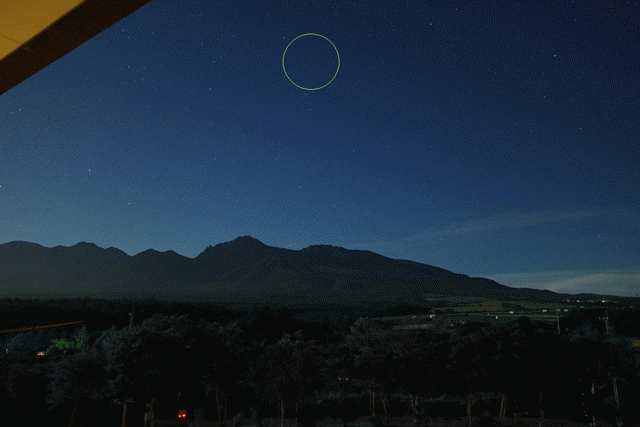
It may be difficult for you to find many meteors in the GIF animation because of the low resolution for the blog posting reason, but I was able to capture them in 15 frames. All of them were radial light traces with the center around the upper right corner of the image.
The thumbnail of this article is the last frame with a meteor in it. It crossed the center of the image in the blue night sky with the sunlight before dawn. This was the biggest meteor I captured.
I started my summer vacation with this kind of shooting and kept “waiting for the clear sky” for the rest of it because of the typhoon. When it rained, I spent some time enjoying Robert Frank’s show at the Kiyosato Museum of Photographic Art.
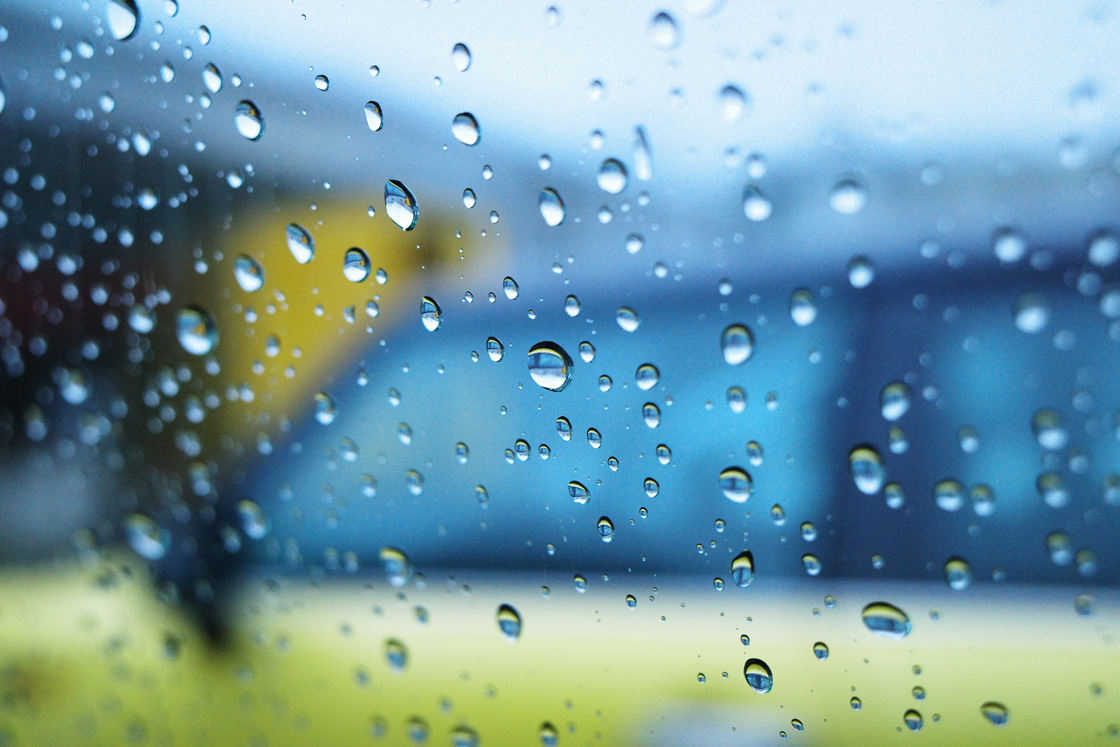
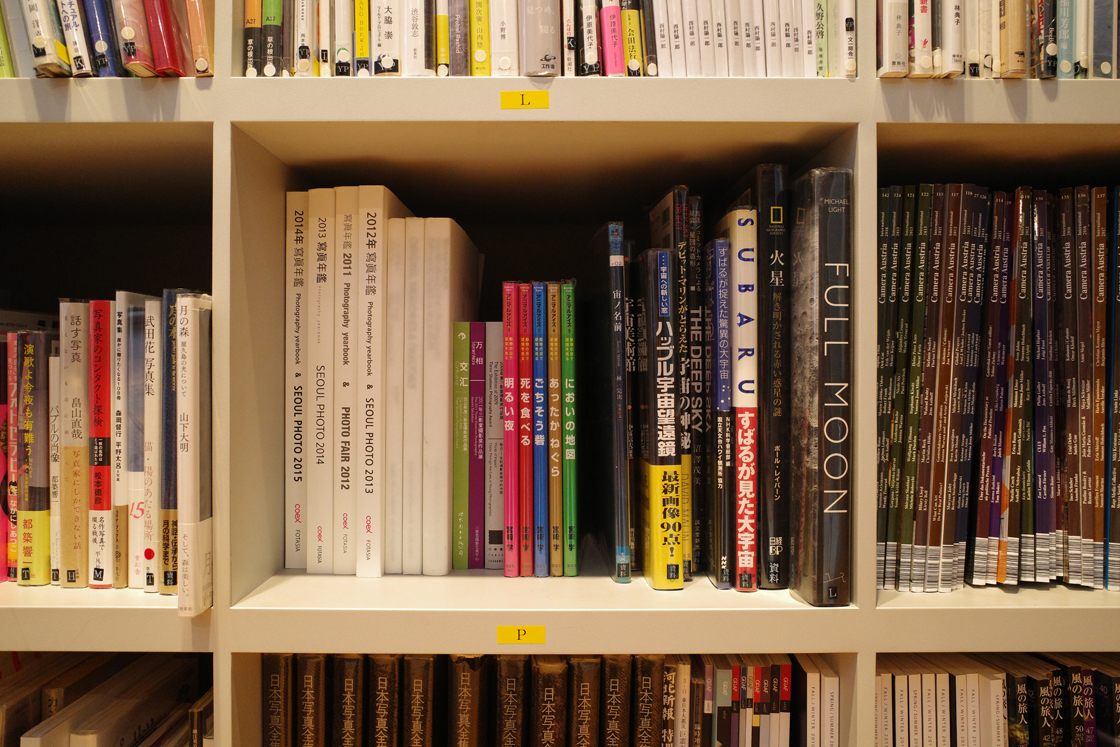
At the museum, you can enjoy not only the photo exhibition but also their book collection. As I was strolling along the shelves, some astronomical books caught my eye!
Maybe because it is located in an area where astrophotography lovers visit, I was glad that they had something like that. A harvest while waiting for the sun.
I finally had the clear sky on the last day and took a walk on the hiking route in the birch forest, just below the Shirakoma pond.
Many dragonflies were already flying. The dragonflies here do not fly away as long as you approach them quietly so you can take your time to shoot and repeat shooting them. Here is an example of shooting with the GR III’s 50mm crop mode. I found it comfortable to focus without using the macro mode.
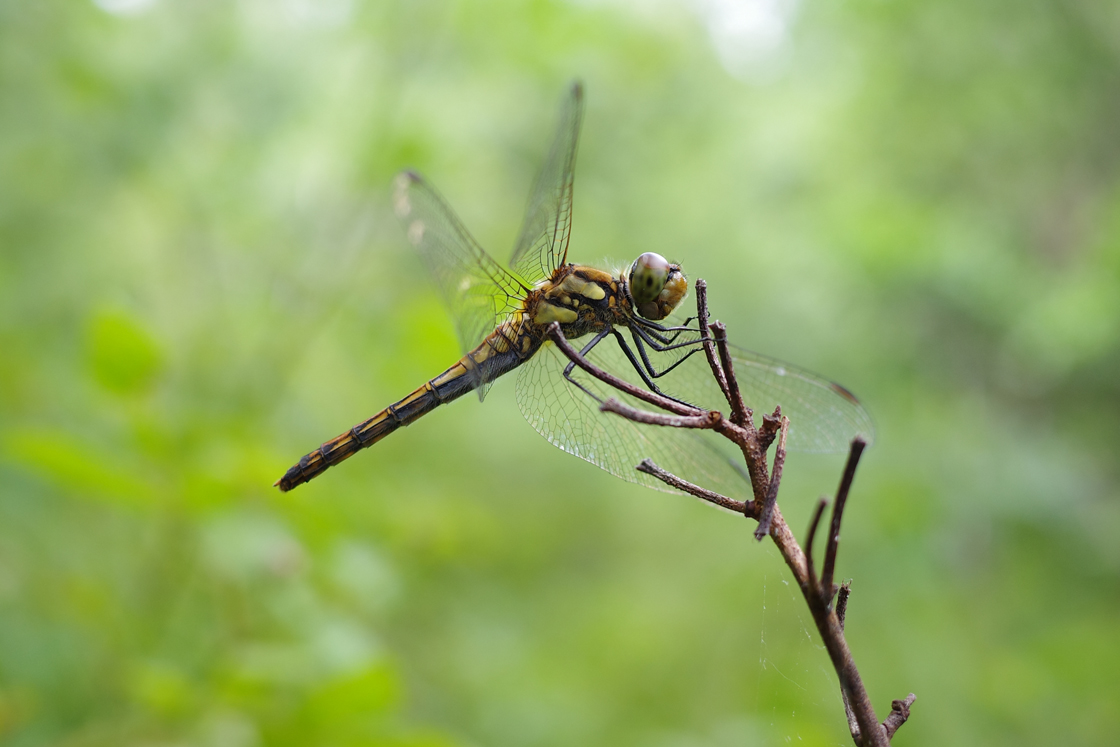
When I was waiting for so long without moving the camera, a couple of dragonflies stopped on my right hand...
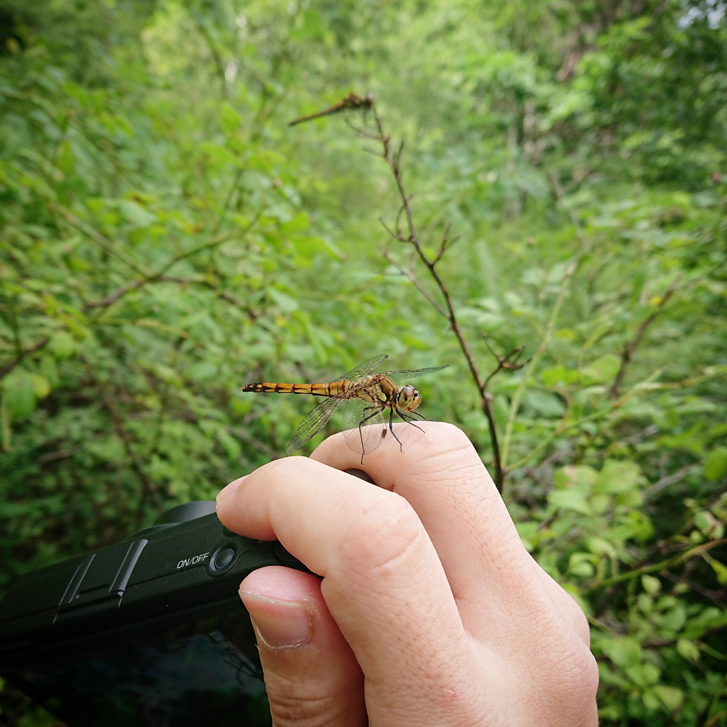
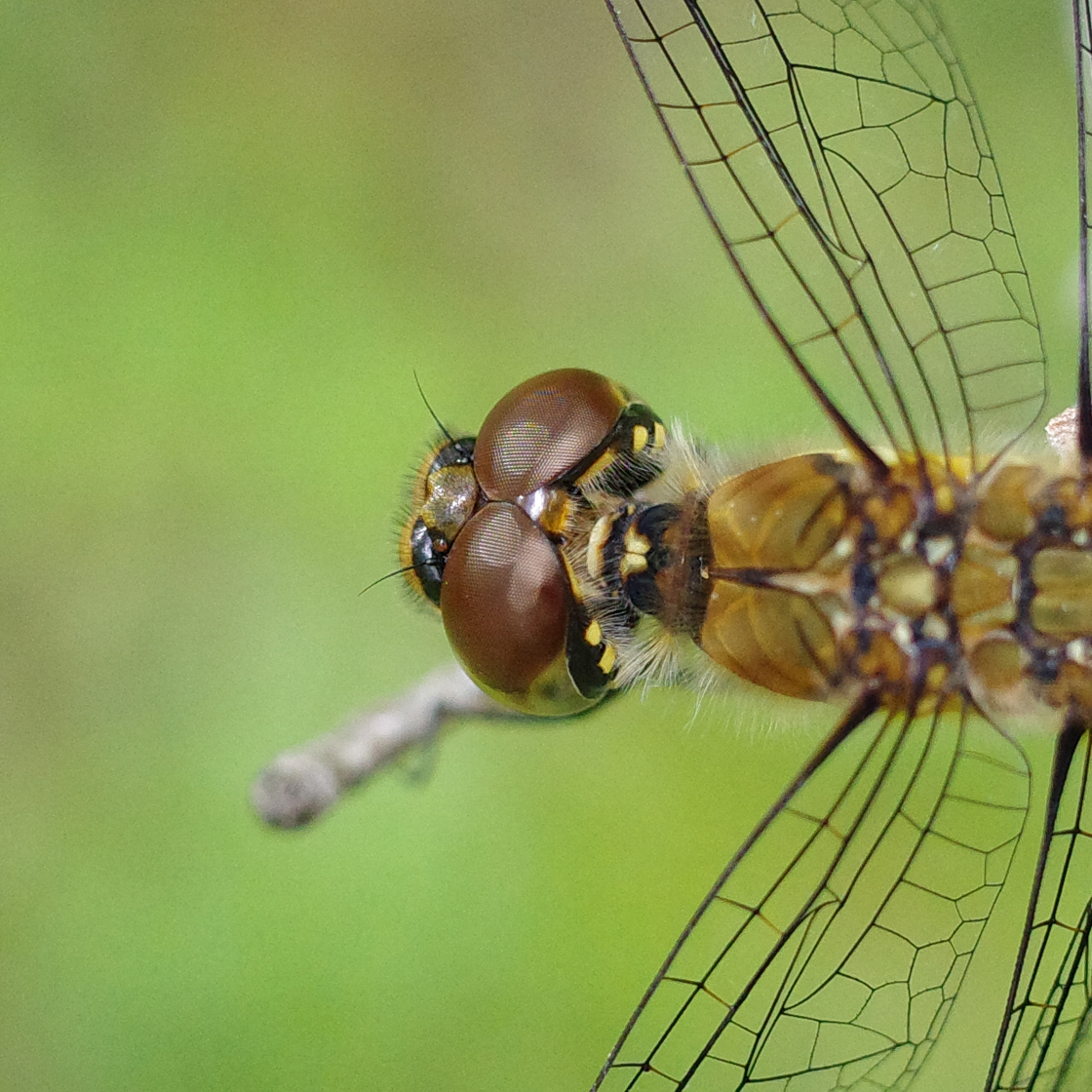
Since I did not carry multiple GRs, I took this photo of dragonflies stopping on my right hand with the GR III with a smartphone using only the left hand.
Since the dragonflies didn't fly away like this, I tried close-ups in the macro mode as you see in the second picture. The focus was about 8cm from the front of the lens. This is a resized image shot with the 50mm crop and converted to 1:1 XS (1280 x 1280 pixels) using the GR III’s trimming function.
You can see the compound eyes of the dragonfly!
I apologize if you don't like insects.
I knew the GR III had the improved close-up function but didn’t realize it was this good... impressive. I was amazed how the lens, sensor and image processing of the GR III match together.
(KA-TSU)














